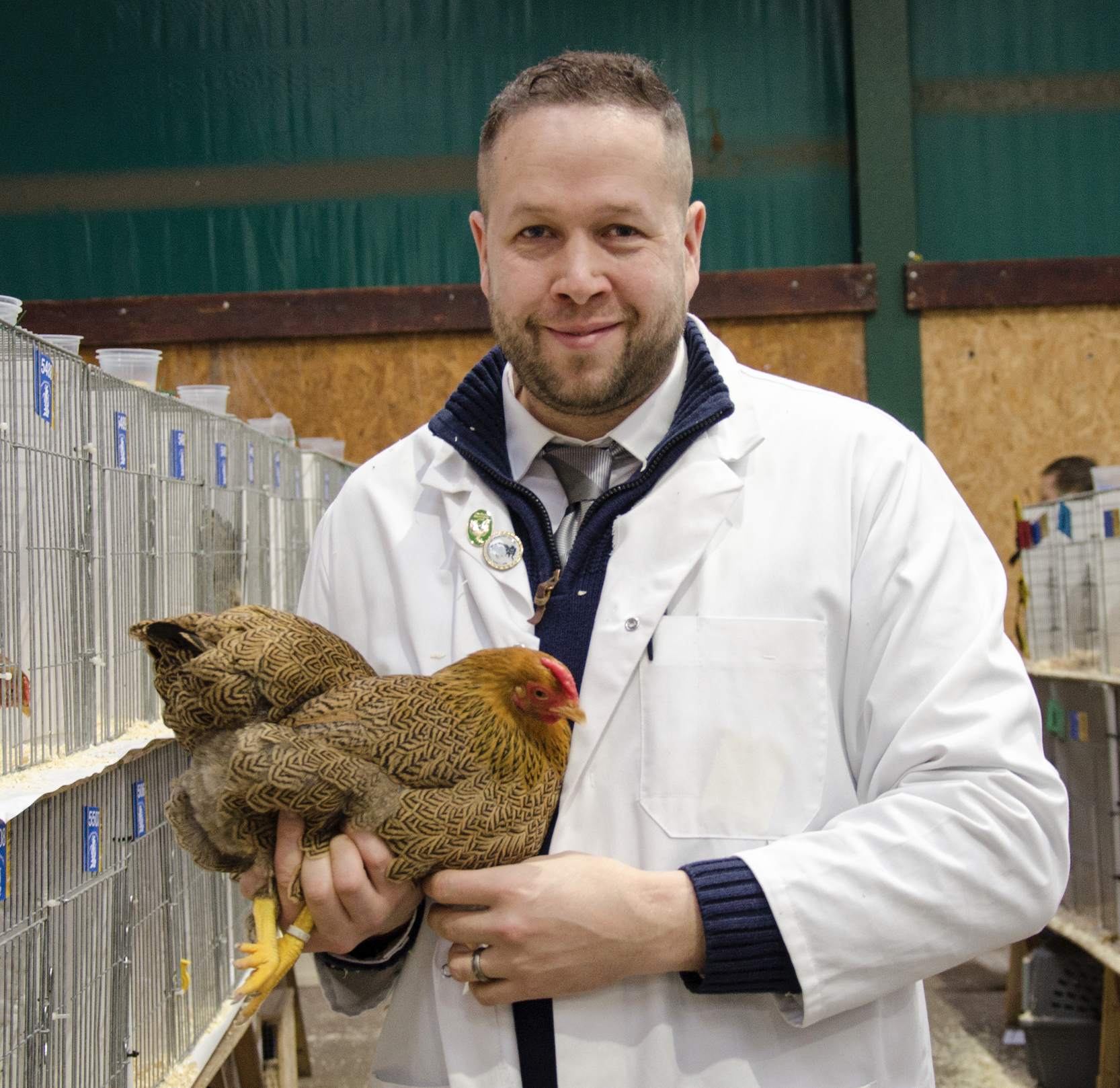Aside from tasty and freshly laid eggs, there are many benefits to keeping chickens. Looked after correctly, they are very therapeutic creatures to have around and certainly enrich your life. But which chicken breed should you go for? What does it take to keep chickens? And what are the best breeds for your smallholding, garden or plot?
Whether you're new to the world of chickens or a long-time poultry fanatic, here are 12 great chicken breeds to consider introducing to your coop.
Need somewhere to keep them safe? Here are the best chicken coops
- Sheep breeds of Britain: herdwick, Shetland, Swaledale and more...
- Cattle breeds of Britain: Aberdeen Angus, long horn, Highland and more...
How to keep chickens
Chickens don’t need much to thrive; familiar and clean surroundings (including a purposely made house), a stress-free environment, fresh feed and water, access to grit and grass, perches and clean bedding.
They also require the ability to dust-bath themselves, which is their own natural barrier against the likes of lice and mites. Less is definitely more when it comes to keeping chickens – which is great for beginners because it makes your new hobby manageable.
The choices of pure breeds are far and wide, but here are a few that are long-established and always welcome new keepers…
Chicken breeds
Light Sussex
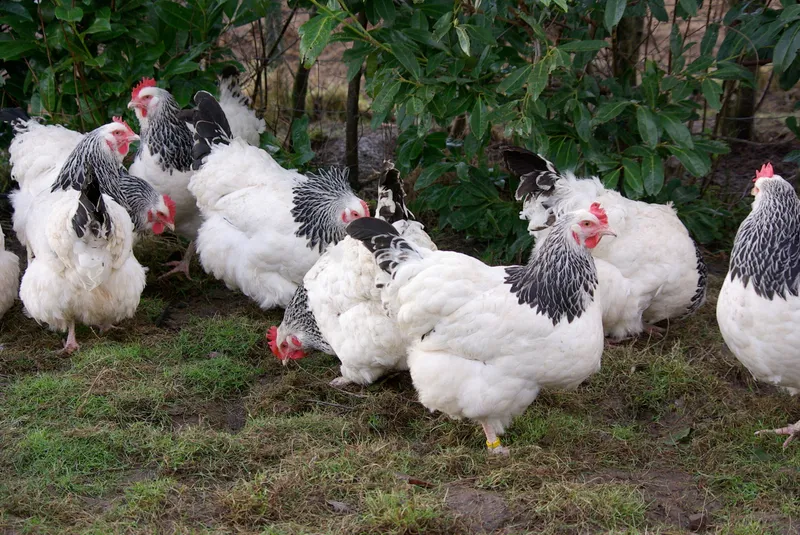
The Light Sussex is just one variety of the Sussex breed, but by far the most popular.
Its white body plumage with contrasting black markings, seen mainly in the neck and tail areas, make it undeniably attractive.
It has white legs and a single comb, and most strains are hardy, placid and reasonably good layers of tinted eggs.
There are both large fowl and bantam versions available, and this variety is a true British gem; created in the 1860s from Light Brahmas and Dorking fowl.
- British duck guide: identification, species, facts and where to see
- Guide to Britain's swans: species identification, folklore and where to see them
- Guide to Britain's geese species: how to identify and where to see
Silver-Grey Dorking
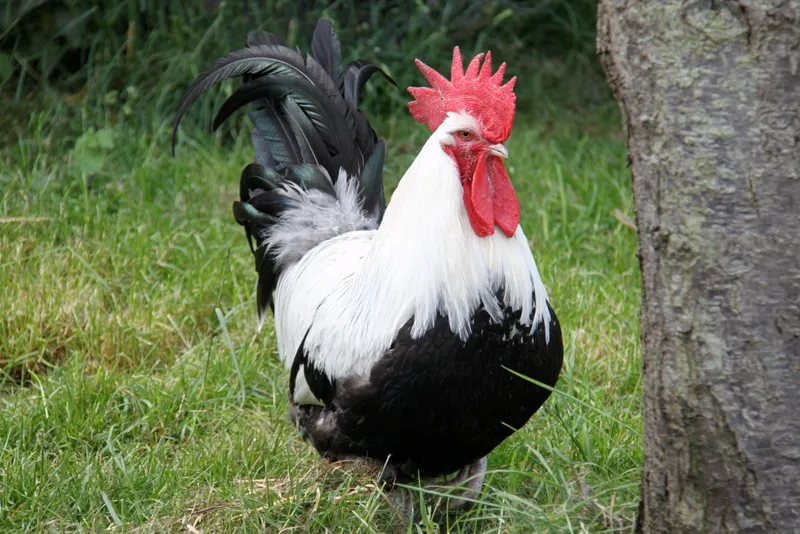
The Dorking is considered Britain’s oldest breed, and believed by many to have been brought over by the Romans.
The most popular variety is the Silver-Grey, where the female is predominantly silver with a whitish neck and salmon-coloured breast. The male is a beautiful contrast of black in the breast, wing bar and tail, with the remainder of its plumage being white.
This calm breed has relatively short legs, and being a ‘meat breed’ should have a long and deep body. Its comb is single (Silver-Grey variety) and its legs are white, with not the usual four, but five toes on each foot.
Buff Orpington
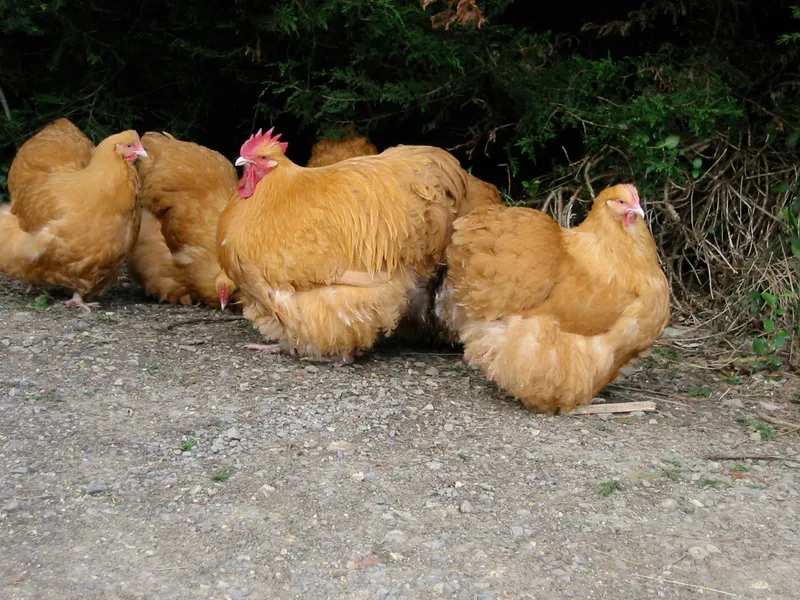
The Buff is by far the most popular of the Orpington varieties and was created here in the UK by William Cook in the 1890s, who also created the Black and White versions of the breed.
The striking orangey-buff plumage is difficult for any poultry enthusiast to ignore, and its most famous devotee was Queen Elizabeth, The Queen Mother, whose birds were shown and tended to by Royal Poultry Keeper, the late Will Burdett MBE.
The Orpington is profusely feathered and has white legs and a short single comb. It’s temperament is graceful but active.
Brahma
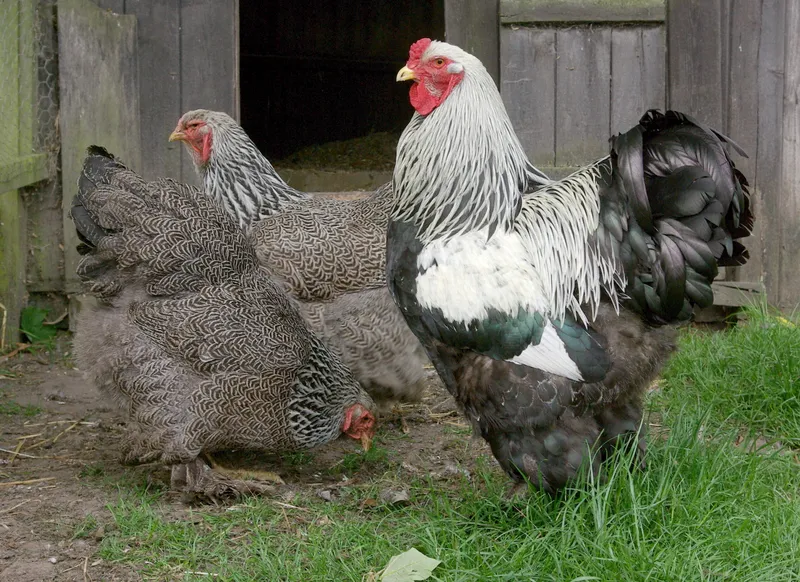
The Brahma is a huge and big-boned fowl that has a ‘stately’ gait but somewhat chequered history. It is now agreed upon by many that it developed in the US from imported ‘Shanghai fowl’ and was perfected in the UK after a consignment of birds was sent to Queen Victoria in 1852.
With a charming disposition, this breed has a fairly unique feature: its brow, formed by a wide skull and slightly overhanging feathers above the eyes, making them appear ‘hawk-like’. It has a ‘pea’ comb which is very small on females and not very large on males.
It has yellow legs that are heavily feathered, and comes in a variety of colours in both large fowl and bantam versions.
Silkie
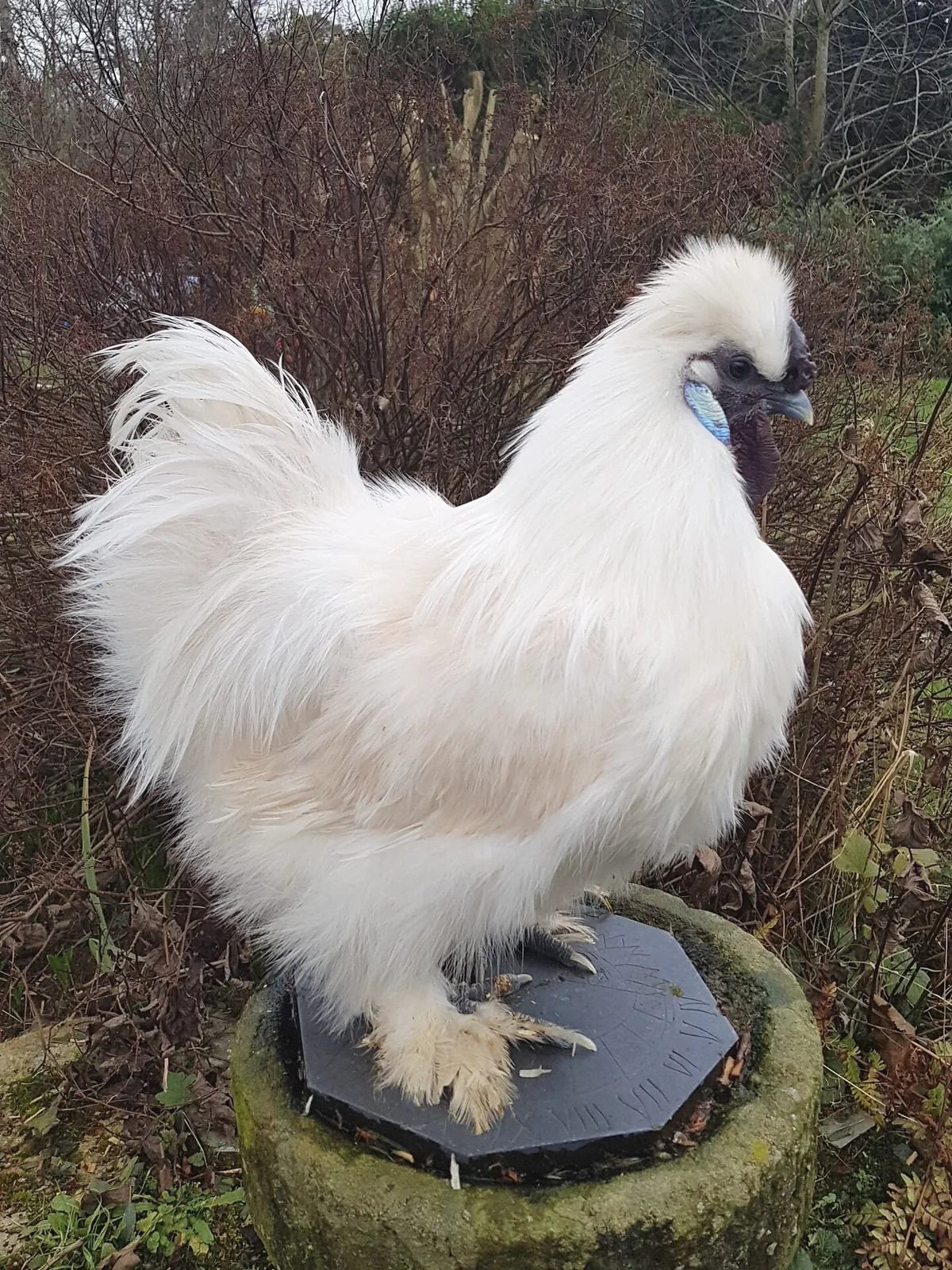
The Silkie breed, originating in China, has a special kind of feather which looks very similar to fur. This is caused by the feather barbules not ‘hooking’ together as they do in normal-feathered chickens.
The Silkie is a very placid breed that is world-renowned for its mothering qualities and is good for children.
Another fascinating factor is its black skin as well as five-toed feet that are moderately feathered, with its crowning features being its rose comb and crested head.
It was only in recent years (early 2000s) that Silkie bantams were properly established here in the UK.
Sebright
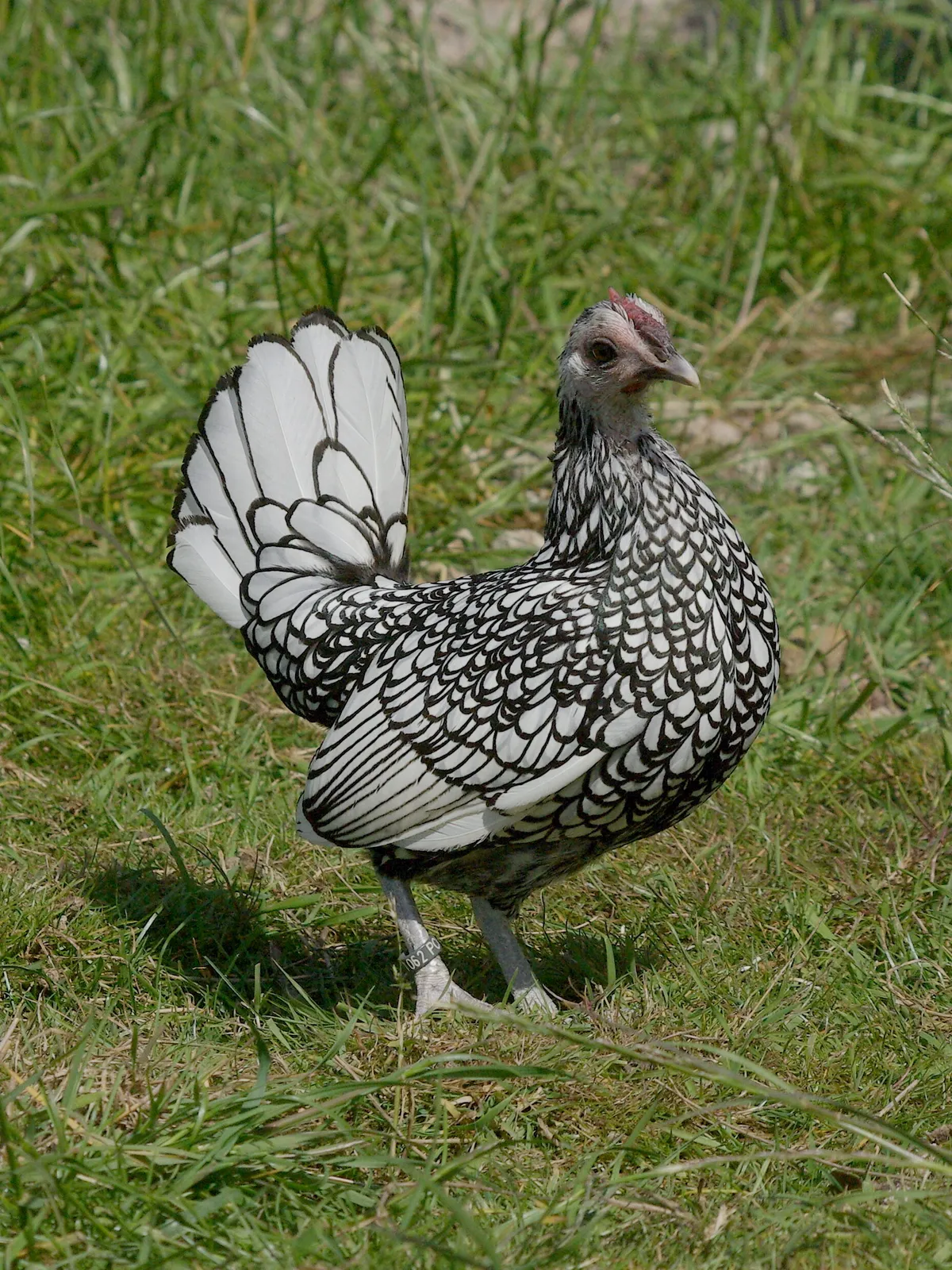
Sebrights are diminutive true bantams that are breathtaking in appearance. They are available in a few colour varieties, but only two are officially recognised: the Gold and Silver. Their plumage is either golden-brown (the Gold) or white (the Silver) with each feather edged with black lacing.
They were created in Britain by Sir John Sebright in the 1840s. The males of this breed boast beautiful ‘hen-feathering’, which means their plumage is virtually identical to their female counterparts.
They have ‘sprightly’ little personalities, and surprising confidence for such tiny fowl. They have grey legs and rose combs. A fascinating breed and good for those who are short on space.
Pekin
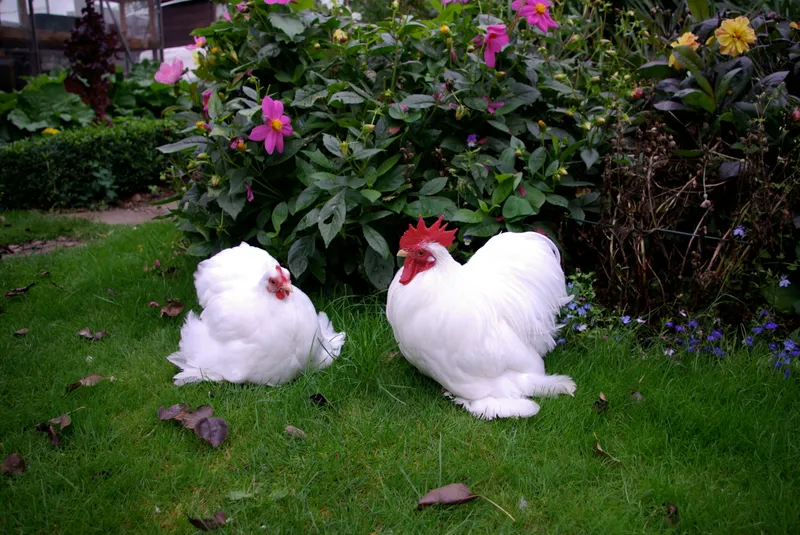
The Pekin is a great breed for children and, being a true bantam with feathered feet, is suited to smaller spaces.
A good specimen looks like it is sitting down when standing, and the head should sit lower than the tail giving the appearance of ‘forward-tilt’. One breeder described his love for the breed as ‘being drawn to little chickens that resembled crinoline ladies.’
With its soft feather and tame personality, the Pekin positively enjoys being handled. Its comb is single and its legs are yellow. By now there are many different colour options from which to choose.
Silver Laced Wyandotte
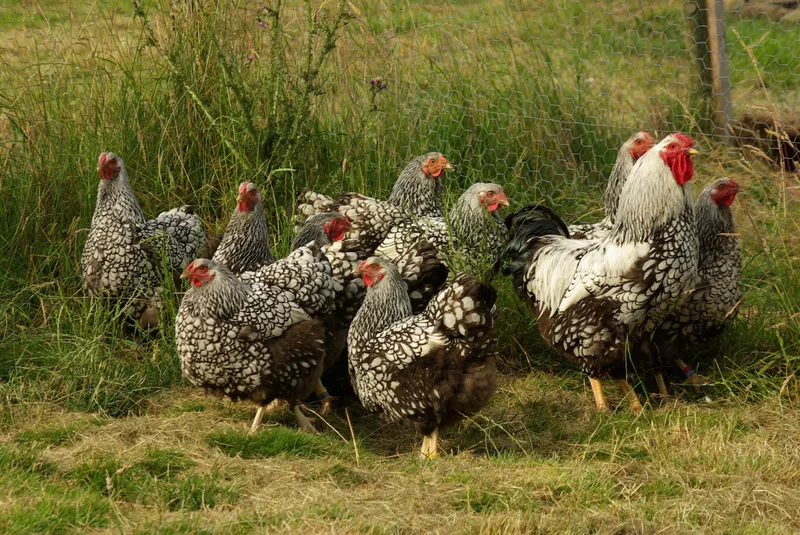
Although an American breed – that comes in a range of plumage options – many potential poultry keepers have fallen under the charm of the Silver Laced Wyandotte.
It is feathered very similarly to the Silver Sebright bantam, with the exception of a blacker tail.
Originally, the variety came to the UK shortly after its inception in the US in the 1890s, and soon became popular thanks to the work of the Spencer family from Shipston-on-Stour, who refined the markings and produced many show winners; a strain that lasted over 100 years and lives on in today’s specimens.
The Wyandotte has yellows legs and a rose comb. Overall, it is rather a placid breed and certainly popular in both large fowl and bantam.
Cuckoo Marans
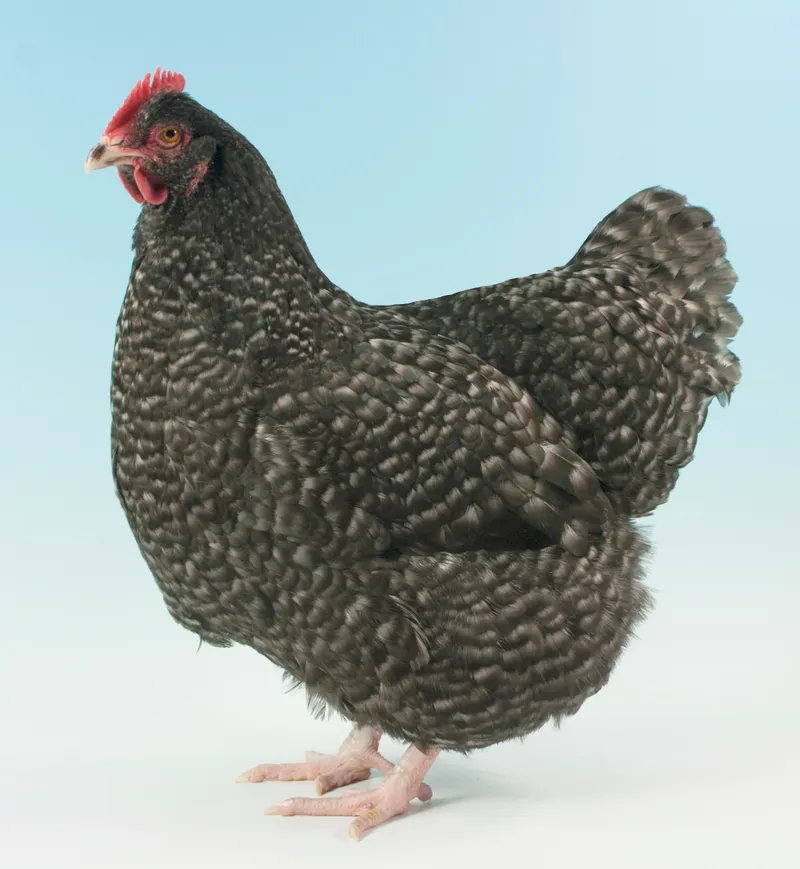
Cuckoo Marans (singular and plural) were established here in 1929, when some fertile hatching eggs were imported from the small town of Marans, La Rochelle, in France by a Lord Greenway.
Cuckoo chickens are a combination of loosely marked black-and-white striped feathers, where the colours blur indiscriminately into one another. Males are similarly marked, but quite often have wider-striped and marginally more distinct markings on each feather that are generally lighter than their sisters.
Another breed with a single comb and white legs, the Marans lays a beautiful dark brown egg and has a calm nature.
Cochin
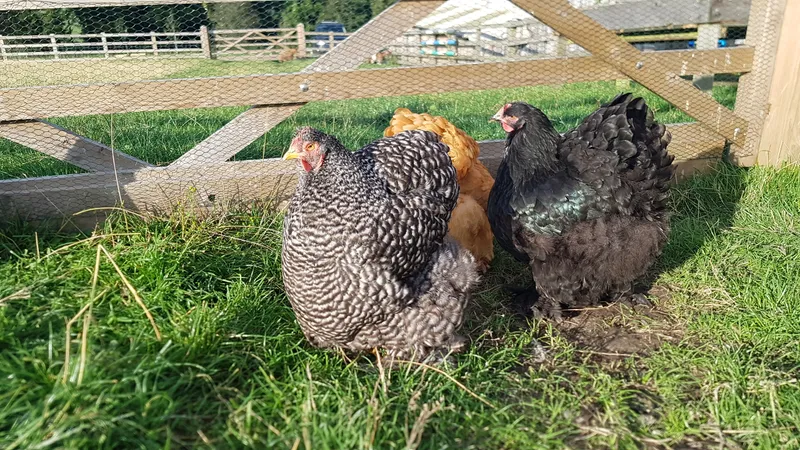
The Cochin fowl can plausibly be regarded as one of the main forebears of most of today’s pure breeds. Originating in China, the first prototype Cochins arrived on British soil in 1843, when Sir Edward Belcher presented a quartet to Queen Victoria on return from his world voyage.
The Cochin is a massive and docile fowl and the most ‘feathery’ of all chickens. Underneath its profusely feathered feet lie yellow legs, and its crowning glory is a medium-sized single comb.
Undoubtedly aristocratic, one of the breed’s most famous devotees was her late grace, the Duchess of Devonshire. Unlike many poultry breeds, the Cochin doesn’t have any bantam counterpart, but is available in a range of standard colour varieties.
Dark Indian Game
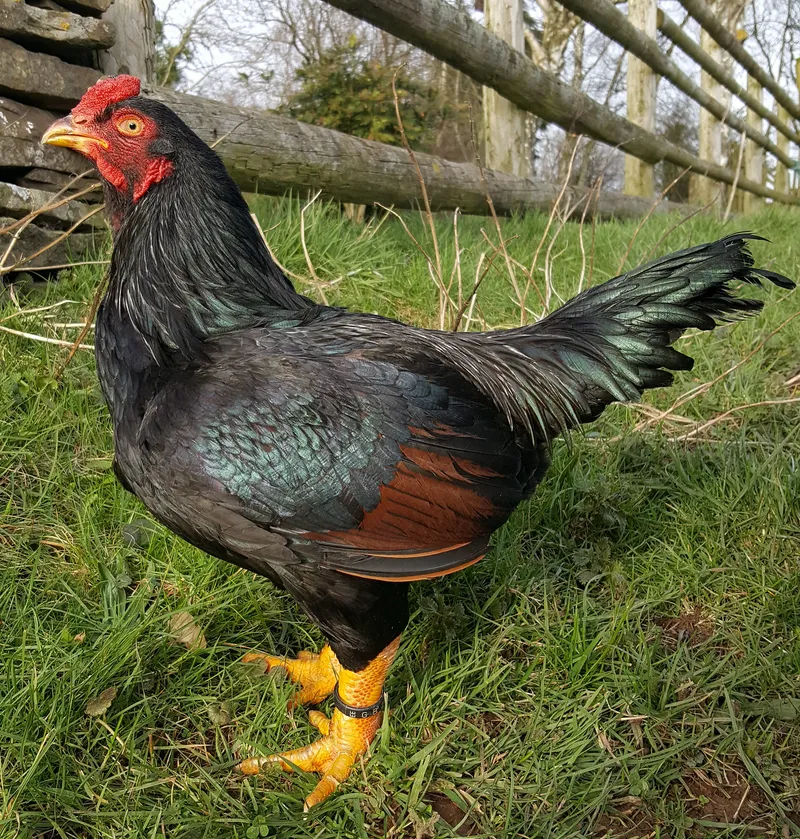
The Indian Game takes its name from the Indian Gamefowl in its ancestry (Asil), but was actually created in Cornwall in the 1840s.
The Americans refer to it as ‘Cornish Game’, and it can reliably be credited as pioneering the modern-day meat chicken industry, which began when Cornish Game crossed to White Plymouth Rocks (and other breeds) produced satisfactory table birds.
Like the Brahma, the Indian Game has a pea comb, and very thick, yellow legs. As well as being a wonderful meat chicken, the Indian also has a beautiful plumage of a mahogany ground colour with thick, black concentric ‘double lacing’ on each feather (females). The males tend to be predominantly black with red shoulders, wing bays and saddle feathers.
There are other options available, which are a variation on the this theme. Although originally created as a game bird, the Indian has a pleasant and calm demeanour.
Araucana
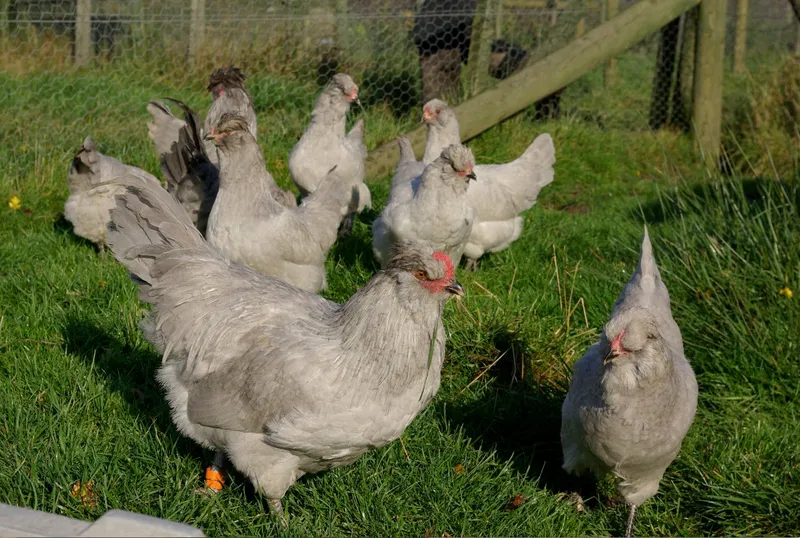
The Araucuana breed is so named after its native tribe of keepers, the Araucanos of Northern Chile. It arrived on British shores as early as 1930, with George Malcolm of Scotland creating the true-breeding Lavender variety.
The breed is now available in a range of colours. Visually, the Araucana’s defining features are its grey legs, crest of feathers on its head, and beard (additional feathers below the beak running to behind the eyes). There is also a ‘rumpless’ version available, which is completely absent of a tail, but is required to have additional feathers known as ‘tufts’ protruding from its ear lobes.
But undoubtedly, the Araucana’s most famous quality is its ability to lay a blue-green egg. This trait has been utilised in the creation of other breeds, such as the popular Cream Legbar.
At present all pure breeds could do with more supporters. Fortunately, most breeds (but especially the ones above), have their own dedicated breed clubs, which are definitely worth joining.
Visit the Poultry Keeper website for an extensive list of chicken breeds.
